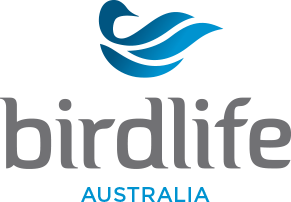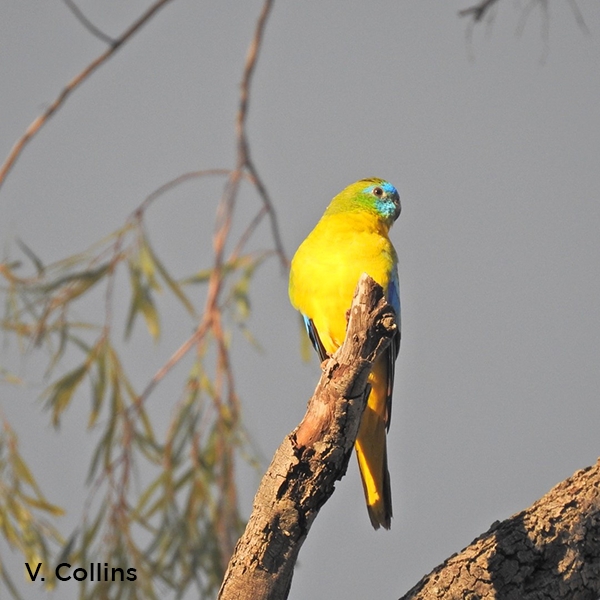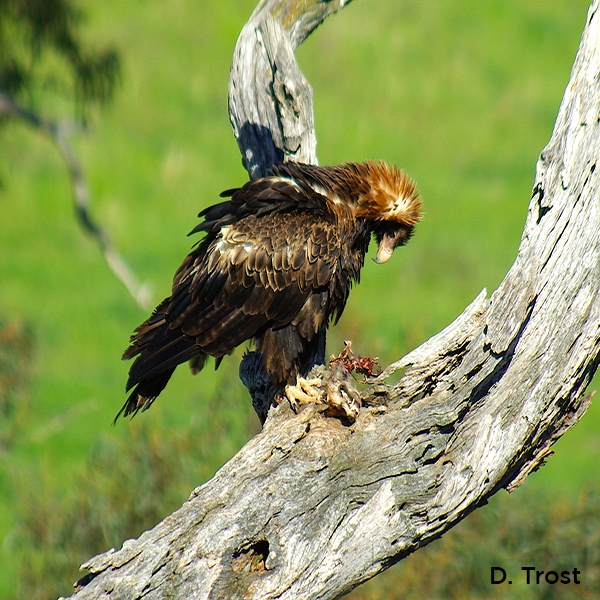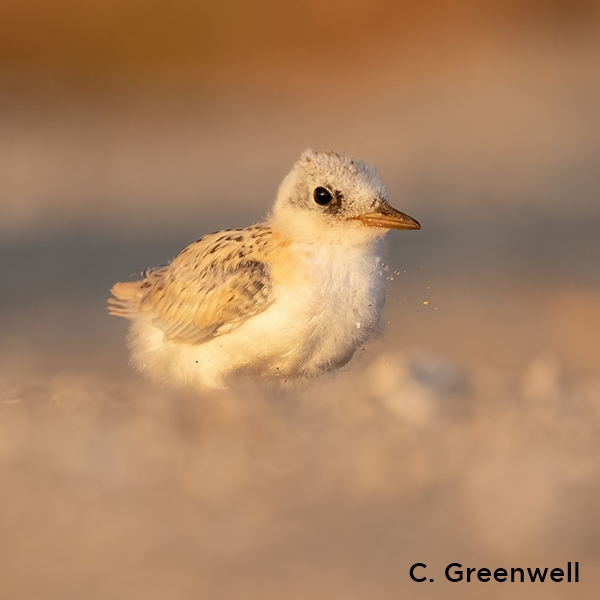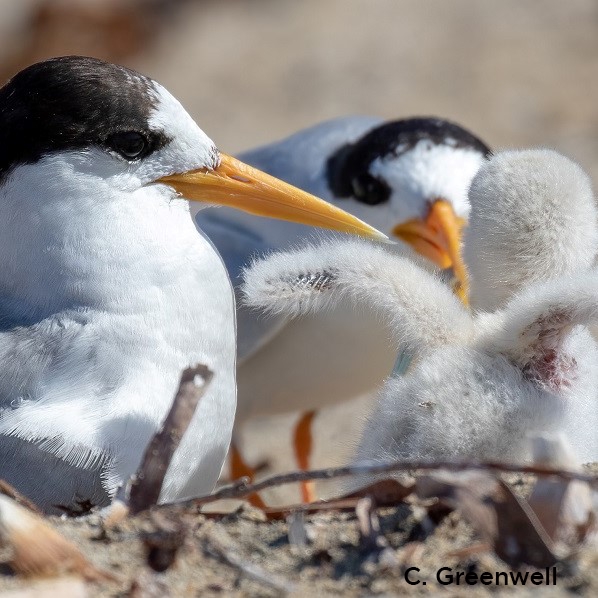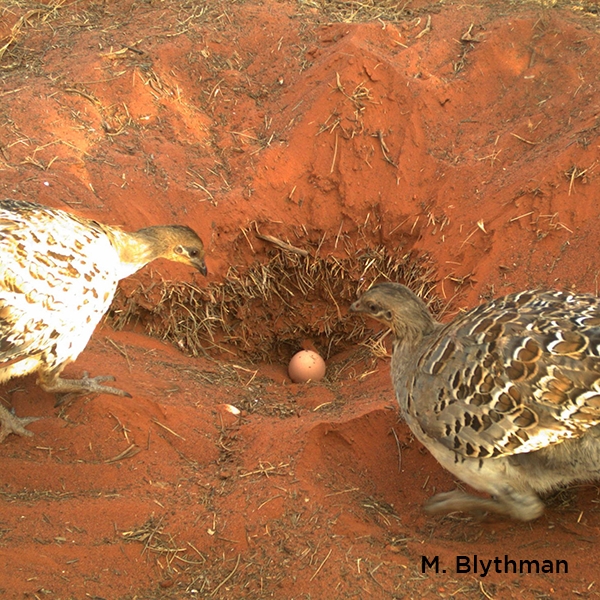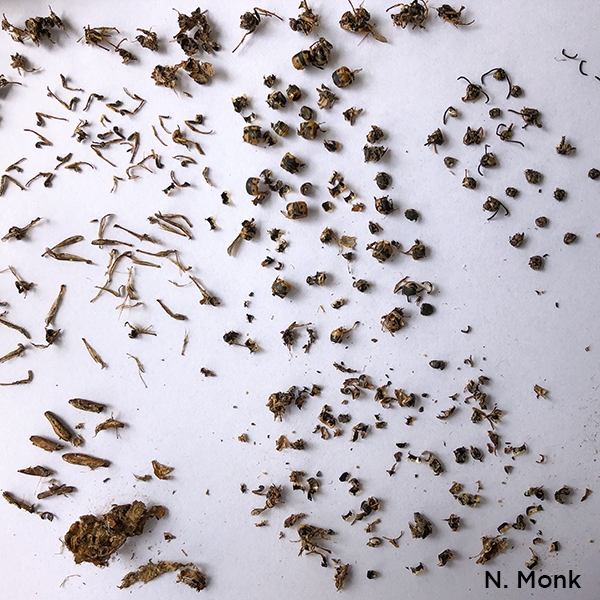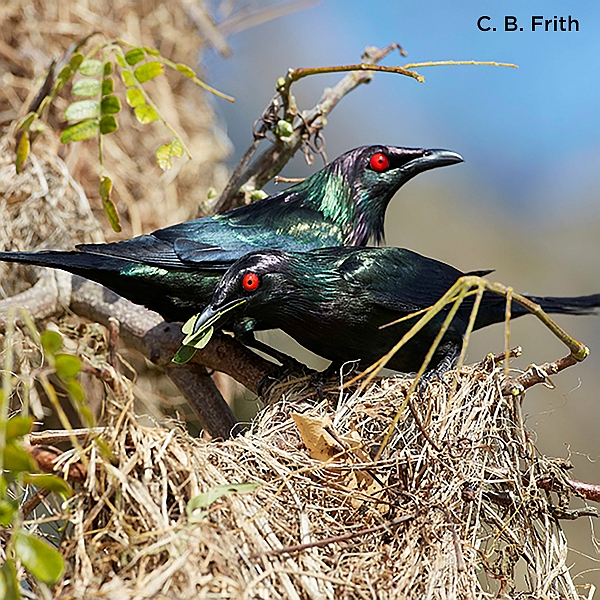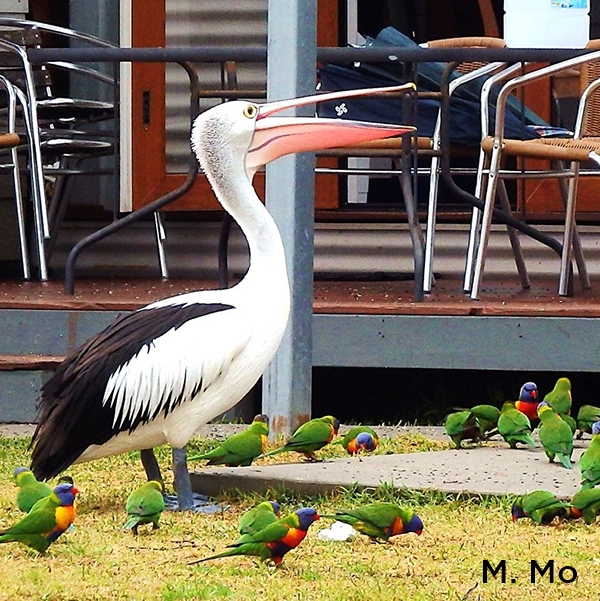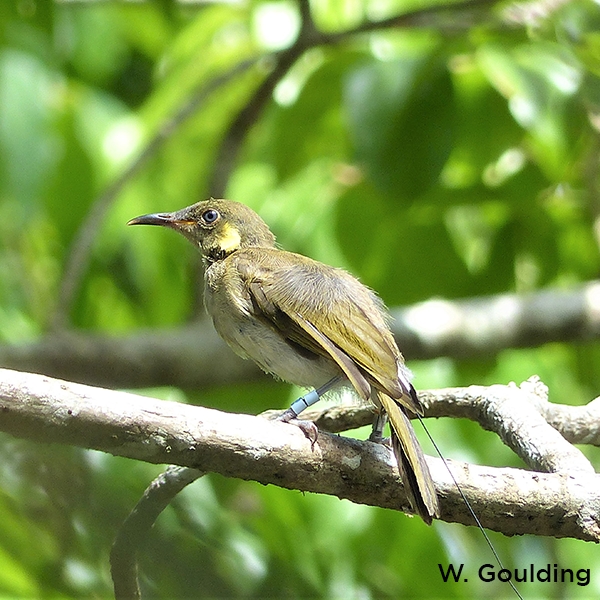New records and a review of animal foods in the diets of the Brolga Antigone rubicunda and Australian Sarus Crane A. antigone gillae
Elinor C. Scambler, Timothy D. Nevard, John D.A. Grant
Abstract
References
Allan, D.G. (1996). A review of the biology and conservation status of cranes. In: Beilfuss, R.D., Tarboton, W.R. & Gichuki, N.N. (Eds). Proceedings of the African Crane and Wetlands Training Workshop 1993, pp. 13–51. International Crane Foundation, Baraboo, Wisconsin, USA.
Anon. (1851). Antipathy of birds. Geelong Advertiser 7 March 1851, 2. Available online: http://nla.gov.au/nla.news-article91919454.
Anon. (1860). Agricultural report. Argus (Melbourne)
December 1860, 5. Available online: http://nla.gov.au/nla.news-article5695010.
Anon. (1881). Another enemy of sheep. The Week (Brisbane) 25 June 1881, 5. Available online: http://nla.gov.au/nla.news-article183951734.
Anon. (1902). Local and general news. North Queensland Register 10 March 1902, 30. Available online: http://nla.gov.au/nla.news-article84423184.
Anon. (1906). Provincial pickings. Snakes. Telegraph (Brisbane) 16 July 1906, 10. Available online: http://nla.gov.au/nla.news-article175100745.
Anon. (‘JB’) (1907). A rambling naturalist who rambled indeed. The Register (South Australia) 7 September 1907, 12. Available online: http://nla.gov.au/nla.news-article57361794.
Anon. (1912). Etheridge news. Cairns Post 20 March 1912, 8. Available online: http://nla.gov.au/nla.news-article39913815.
Archibald, G.W. (1981). Introducing the Sarolga. In: Lewis, J.C. (Ed.). Crane Research Around the World, pp. 213–215. International Crane Foundation, Baraboo, Wisconsin, USA.
Archibald, G.W. & Swengel, S.R. (1987). Comparative ecology and behavior of eastern Sarus Cranes and Brolgas in Australia. In: Lewis, J.C. (Ed.). Proceedings of the 1985 Crane Workshop, 26–28 May 1985, Grand Island, Nebraska, pp. 107–116. Platte River Whooping Crane Habitat Maintenance Trust and United States Fish & Wildlife Service, Grand Island, Nebraska, USA.
Archibald, G.W., Sundar, K.S.G. & Barzen, J. (2003). A review of the three subspecies of Sarus Cranes Grus antigone. Journal of Ecological Society 16, 5–15.
Arnol, J.S., White, D.M. & Hastings, I. (1984). Management of the Brolga (Grus rubicundus) in Victoria. Technical Report Series No. 5. Department of Conservation, Forests & Lands, Melbourne.
Ashton, A. (2012). Rats! Brolga strolls off with corpse. Available online: http://tytotony.blogspot.com /2012/06/rats-brolga-strolls-off-with-corpse.html (accessed 6 June 2017).
Baker, E.C.S. (1929). The Fauna of British India Including Ceylon and Burma, Volume VI: Birds. Taylor & Francis, London.
Barbehenn, R.V., Chen, Z., Karowe, D.N. & Spickards, A. (2004). C3 grasses have higher nutritional quality than C4 grasses under ambient and elevated atmospheric CO2. Global Change Biology 10, 1565–1575.
Barker, R.D. & Vestjens, W.J.M. (1979). The Food of Australian Birds, Volume 1: Non-passerines. CSIRO, Melbourne.
Barzen, J.A., Gossens, A.P. & Lacy, A.E. (2018). Sandhill Crane foraging behaviour and damage estimates in cornfields during spring. Proceedings of the North American Crane Workshop 14, 67–80.
Beckmann, C. & Shine, R. (2009). Impact of invasive Cane Toads on Australian Birds. Conservation Biology 23, 1544–1549.
Blackman, J.G. (1971). Sex determination of Australian cranes (Gruidae). Queensland Journal of Agricultural and Animal Sciences 28, 281–286.
Blackman, J.G. (1983a). The swamps: A habitat in motion. In: Lavery, H.J. (Ed.). Exploration North: A Natural History of Queensland. 2nd edn. pp. 147–184. Currey O’Neill, Melbourne.
Blackman, J.G. (1983b). Cranes and rails. In: Haigh, C. (Ed.). Wetlands in New South Wales, pp. 52–55. New South Wales Parks & Wildlife Service, Sydney.
Blackman, J.G., Perry, T.W., Ford, G.I., Craven, S.A., Gardiner, S.J. & De Lai, R.J. (1999). Characteristics of Important Wetlands in Queensland. Environmental Protection Agency, Brisbane.
Boggie, M.A. (2018). Linking Diet, Behavior, and Bioenergetics of a Migratory Waterbird to Evaluate Response to Wintering Ground Conditions. PhD thesis. New Mexico State University, Las Cruces, New Mexico, USA.
Bransbury, J. (1991). The Brolga in South-eastern South Australia. Department of Environment & Planning, Adelaide.
Brown, C.B. & Archibald, G.W. (1977). Captive Brolgas and Sarus Cranes prey on wild mice. Emu 77, 39–40.
Campbell, A.J. (1901). Nests and Eggs of Australian Birds. Part I. Pawson & Brailsford, Sheffield, UK.
Caven, A.J., Koupal, K.D., Baasch, D.M., Buckley, E.M.B., Malzahn, J., Forsberg, M.L. & Lundgren, M. (2021). Whooping Crane (Grus americana) family consumes a diversity of aquatic vertebrates during fall migration stopover at the Platte River, Nebraska. Western North American Naturalist 81, 592–607.
Chisholm, A.H. (1944). Birds of the Gilbert Diary. Emu 44,
–150.
Covacevich, J. & Archer, M. (1975). The distribution of the Cane Toad, Bufo marinus, in Australia and its effects on indigenous vertebrates. Memoirs of the Queensland Museum 17, 305–310.
Devaney, J. (1939). Nature notes: The Brolga again. Daily Mercury (Mackay) 31 January 1939, 4. Available online: http://nla.gov.au/nla.news-article168817515.
Dunne, H.I. (2020). Sarus Crane fishing in fresh water near Normanton, north-west Queensland. Available online: http://ozcranes.net/species/sarus-food.html (accessed 22 November 2021).
Dunne, H.I. & Scambler, E.C. (2020). First observation of a Brolga Antigone rubicunda preying on eggs and of ‘water-kicking’ behaviour by Australasian Grebes Tachybaptus novaehollandiae as a nest-defence. Australian Field Ornithology 37, 119–123.
eBird (2020). Basic Dataset Version: EBD_relMay-2020. Cornell Lab of Ornithology, Ithaca, New York, USA.
Flickr (2022). Image search. Available online: https://www.flickr.com/search/?text=brolga (accessed 2 February 2022).
Fountain, P. & Ward, T. (1907). Rambles of an Australian Naturalist. John Murray, London.
Geluso, K., Krohn, B.T., Harner, M.J. & Assenmacher, M.J. (2013). Whooping Cranes consume Plains Leopard Frogs at migratory stopover sites in Nebraska. The Prairie Naturalist 45, 91–93.
Gill, H.B. (1969). First record of the Sarus Crane in Australia. Emu 69, 49–52.
Gould, J. (1848). The Birds of Australia, Volume VI. Author, London.
Gowland, P.N. (1989). The Ecology and Management of Waterbird Pests in the Ord River Irrigation Area, Western Australia. RAOU Microfiche Series No. 35. Royal Australasian Ornithologists Union, Melbourne.
Hall, B.P. (1974). Birds of the Harold Hall Australian Expeditions, 1962–1970. British Museum (Natural History), London.
Hartert, E. & Young, F. (1928). Some observations on a pair of Sarus Cranes at Tring. Novitates Zoologicae 34, 75–76.
Harvey, J.M., Lieff, B.C., MacInnes, C.D. & Prevett, J.P. (1968). Observations of behaviour of Sandhill Cranes. Wilson Bulletin 80, 121–125.
Heckathorn, S.A., McNaughton, S.J. & Coleman, J.S. (1999). C4 plants and herbivory. In: Sage, R.F. & Monson, R.K. (Eds). C4 Plant Biology, pp. 285–312. Academic Press, San Diego, California, USA.
Herring, M.W. (2001). The Brolga (Grus rubicunda) in the New South Wales and Victorian Riverina: Distribution, Breeding Habitat and Potential Role as an Umbrella Species. BAppSc (Hons) thesis. Charles Sturt University, Albury, NSW.
Horwich, R.H. (1996). Imprinting, attachment and behavioural development in cranes. In: Elllis, D.H, Gee, G.F. & Mirande, C.M. (Eds). Cranes: Their Biology, Husbandry and Conservation,
pp. 117–122. National Biological Service & International Crane Foundation, Washington DC.
Hou, J., Li, L., Wang, Y., Wang, W., Zhan, H., Dai, N. & Lu, P. (2021). Influences of submerged plant collapse on diet composition, breadth and overlap among four crane species at Poyang Lake, China. Frontiers in Zoology 18, 1–17.
Hume, A.O. & Marshall, C.H.T. (1879). The Game Birds of India, Burmah and Ceylon, Volume III. Authors, Calcutta, India.
ICZN (International Commission on Zoological Nomenclature) (2022). Available online: https://www.iczn.org/ (accessed
February 2022).
Karasov, W.H. (1990). Digestion in birds: Chemical and physiological determinants and ecological implications. Studies in Avian Biology 13, 391–415.
King, K. (2008). Behaviour Patterns and Habitat Use of the Brolga Grus rubicundus at Two Flocking Sites in South-west Victoria. BSc (Hons) thesis. Deakin University, Geelong, Vic.
Lavery, H.J. (1964). The Brolga, Grus rubicundus (Perry), on some coastal areas in north Queensland: Fluctuations in populations, and economic aspects. Queensland Journal of Agricultural Science 21, 261–264.
Lavery, H.J. (1969). Collisions Between Aircraft and Birds at Townsville, Queensland. Division of Plant Industry Bulletin
No. 496. Queensland Department of Primary Industries, Brisbane.
Lavery, H.J. & Blackman, J.G. (1969). The cranes of Australia. Queensland Agricultural Journal 95, 156–162.
Law, S.C. (1930). Fish-eating habit of the Sarus Crane, Antigone antigone. Journal of the Bombay Natural History Society 34, 582–583.
Luo, J., Ye, Y., Gao, Z. & Wang, W. (2015). Stomach content and faecal analysis of red-crowned crane (Grus japonensis) in Zhalong Wetland, north-eastern China. Biologia 70, 542–546.
Macdonald, D.A. (1913). Notes for boys. Argus (Melbourne)
December 1913, 5. Available online: http://nla.gov.au/nla.news-article7260408.
Malcolm, D., Nagel, B., Sinclair, I. & Heiner, I. (1999). Soils and Agricultural Land Suitability of the Atherton Tablelands, North Queensland. Department of Natural Resources, Brisbane.
Marchant, S. & Higgins, P.J. (Eds) (1993). Handbook of Australian, New Zealand & Antarctic Birds, Volume 2: Raptors to Lapwings. Oxford University Press, Melbourne.
Mathews, G.M. (1913–1914). The Birds of Australia. Volume 3. Witherby & Co, London.
Mirande, C.M. & Harris, J.T. (Eds) (2019). Crane Conservation Strategy. International Crane Foundation, Baraboo, Wisconsin, USA.
Mukandan, M.K., Radhakrishnan, M.A., James, M.A. & Nair, M.R. (1981). Comparative study of the nutrient content of fish and shell fish. Fish Technology 18, 129–132.
Mukherjee, A. (1999). Ecological Study on the Indian Sarus Crane Grus antigone in the Central Gujarat. PhD thesis. Saurashtra University, Rajkot, Gujarat, India.
Mullins, W.H. & Bizeau, E.G. (1978). Summer foods of Sandhill Cranes in Idaho. Auk 95, 175–178.
Nevard, T.D. (2019). Interactions between Brolgas and Sarus Cranes in Australia. PhD thesis. Charles Darwin University, Darwin.
Nevard, T.D., Franklin, D.C., Leiper, I., Archibald, G. & Garnett, S.T. (2019). Agriculture, brolgas and Australian sarus cranes on the Atherton Tablelands, Australia. Pacific Conservation Biology 25, 377–385.
Nevard, T., Haase, M., Archibald, G., Leiper, I. & Garnett, S.T. (2020). The Sarolga: Conservation implications of genetic and visual evidence for hybridization between the Brolga Antigone rubicunda and the Australian Sarus Crane Antigone antigone gillae. Oryx 54, 40–51.
North, A.J. (1913–1914). Nests and Eggs of Birds Found Breeding in Australia and Tasmania, Volume IV. Australian Museum, Sydney.
Orians, G.H. & Milewski, A.V. (2007). Ecology of Australia: The effects of nutrient-poor soils and intense fires. Biological Reviews 82, 393–423.
Ozcranes (2016). Key Biodiversity Areas: Atherton Tablelands. Available online: http://ozcranes.net/consv/iba.html (accessed 2 February 2016).
Perry, G. (1810). Arcana, or the Museum of Natural History: Containing the Most Recent Discovered Objects. G. Smeaton, London.
Phalen, D.N., Drew, M.L., Contreras, C., Roset, K. & Mora, M. (2005). Naturally-occurring secondary nutritional hyperparathyroidism in Cattle Egrets (Bubulcus ibis) from central Texas. Journal of Wildlife Diseases 41, 401–415.
Price, G. (Ed.) (2006). Australian Soil Fertility Manual. 3rd edn. CSIRO Publishing, Melbourne.
Queensland Government. (2022). Queensland regions. Available online: https://www.statedevelopment.qld.gov.au/regions/queensland (accessed 12 February 2022).
Rand, A.L. & Gilliard, E.T. (1967). Handbook of New Guinea Birds. Weidenfeld & Nicolson, London.
Reardon, M. (2007). Brolga Country: Travels in Wild Australia. Allen & Unwin, Sydney.
Reinecke, K. & Krapu, G.L. (1986). Feeding ecology of Sandhill Cranes during spring migration in Nebraska. Journal of Wildlife Management 50, 71–79.
Roberts, G.J. (2011). Brolga eats toad. Available online: http://bioacoustics.cse.unsw.edu.au/ archives/html/birding-aus/2011-10/msg00271.html (accessed 9 June 2017).
Roberts, N.L. (‘NLR’). (1943). A naturalist’s notebook. Birds and snakes. Central Queensland Herald 11 November 1943, 6. Available online: http://nla.gov.au/nla.news-article79272352.
Roessingh, K. (2012). Nesting Habitat and Diet Studies of Sandhill Cranes (Grus canadensis) from the Central and North Coast of British Columbia. MSc thesis. University of Victoria, British Columbia, Canada.
Scambler, E.C., Nevard, T.D., Harrington, G.N., Edwards, E.C., Simmonds, V. & Franklin, D.C. (2020). Numbers, distribution and behaviour of Sarus Cranes Antigone antigone gillae and Brolgas A. rubicunda at wintering roosts on the Atherton Tablelands, far north Queensland, Australia. Australian Field Ornithology 37, 87–99.
Serafin, J.A. (1982). The influence of diet composition upon growth and development of Sandhill Cranes. Condor 84,
–434.
Smith, J. (de Boos, C.) (1862). Men who have been raised. Sydney Mail 12 April 1862, 5. Available online:
http://nla.gov.au/nla.news-article166690221.
Spitzer, P.R. (1979). The Sarus Crane at Bharatpur. In: Lewis, J.C. (Ed.). Proceedings of the 1978 Crane Workshop, December 6–8 1978, Rockport, Texas, pp. 249–253. Colorado State University & National Audubon Society, Colorado, USA.
Sundar, K.S.G., Grant, J.D.A., Veltheim, I., Kittur, S., Brandis, K.J., McCarthy, M.A. & Scambler, E.C. (2019). Sympatric cranes in northern Australia: Abundance, breeding success, habitat preference and diet. Emu – Austral Ornithology 119, 79–89.
Taylor, K. & Horne, R. (1972). At the Edge of the Salt Plain. 16 mm film, 28.00 minutes. Wild Australia, ACMI 000676. Australian Broadcasting Commission, Sydney.
Teitelbaum, C.S., Converse, S.J. & Mueller, T. (2019). The importance of early life experience and animal cultures in reintroductions. Conservation Letters 12, e12599.
Veltheim, I. (2018). Movements, Behaviour and Ecology of the Brolga, Antigone rubicunda, at Multiple Spatial and Temporal Scales. PhD thesis. Federation University, Ballarat, Vic.
Veltheim I., Cook, S., McCarthy, M.A., Palmer, G.C. & Hill, F.A.R. (2022). Partial migration of Brolgas (Antigone rubicunda) within a restricted range is revealed by GPS tracking. Emu – Austral Ornithology 122, 39–50.
Veyret, L. (2006). Brolga (Grus rubicunda) Husbandry and Hand-raising. Territory Wildlife Park, Berry Springs, NT.
Wahraich, J. & Sundar, K.S.G. (2022). Sarus crane Antigone antigone predating on chicks of grey-headed swamphen Porphyrio poliocephalus. Current Science 123, 1054–1056.
Walkinshaw, L.H. (1947). Some nesting records of the Sarus Crane in North American zoological parks. Auk 64, 602–615.
Walkinshaw, L.H. (1973). Cranes of the World. Winchester, New York, USA.
Walton, C.S., Hardwick, L. & Hanson, J. (2003). Locusts in Queensland. Pest Status Review Series: Land Protection. Queensland Department of Resources & Mines, Brisbane.
White, D.M. (1987). The status and distribution of the Brolga in Victoria, Australia. In: Archibald, G.W. & Pasquier, R.F. (Eds). Proceedings of the 1983 International Crane Workshop, Bharatpur, India, February 1983, pp. 115–131. International Crane Foundation, Baraboo, Wisconsin, USA.
Whittell, H.M. & Serventy, D.L. (1947). Correspondence. Emu 46, 317.
Wiesenborn, W.D. (2012). Sulfur contents of spiders and insects in desert riparian habitat. Florida Entomologist 95, 952–960.
Wilson, D.E. & Reeder, D.M. (2005). Mammal Species of the World. A Taxonomic and Geographic Reference. 3rd edn. John Hopkins University Press, Baltimore, Maryland, USA.
